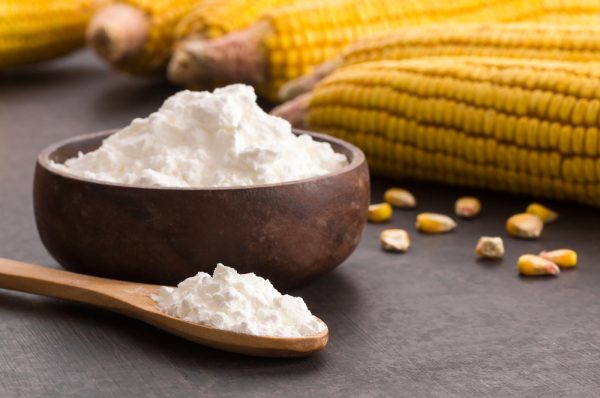Do you ever wonder if adding cornstarch to your coffee is a good idea? Perhaps you’ve heard that it can help make your coffee creamier or smoother, or maybe you’re just curious about the idea. Whatever your reason for wondering, we’re here to provide some answers.
First, let’s address the question of whether or not you can add cornstarch to your coffee. The answer is yes, but with some caveats. You can’t simply stir cornstarch into your morning coffee and expect a delicious result. There are several reasons for this, which we’ll explain in more depth throughout this article, along with whether or not adding cornstarch to coffee has any real purpose or benefit.
So, if you’re curious about adding cornstarch to your coffee, keep reading to find out more about what happens when you do and whether or not it’s a good idea. We’ll explore the science behind cornstarch and coffee, as well as some other surprising things you can add to your coffee to enhance its flavor and texture.
Understanding Cornstarch
What Is Cornstarch?
Cornstarch is a fine white powder made from corn kernels. It is a common ingredient in many recipes, including soups, sauces, and baked goods. Cornstarch is a carbohydrate that is extracted from the endosperm of corn. It is often used as a thickener because it has the ability to absorb and hold water, which creates a thick and creamy texture.
Cornstarch is also used in some non-food applications, such as in the production of paper and textiles. It is a versatile ingredient that has many uses, both in the kitchen and beyond.
How Is Cornstarch Produced?
Cornstarch is produced through a process called wet milling. The process begins by cleaning shelled corn and steeping it in a warm, acidic solution of water and sulfur dioxide. This solution softens the kernel, making it easier to mill.
The water is then boiled off, and the milling process loosens the hull (pericarp) and endosperm from the germ. The endosperm is then dried and ground into a fine white powder, which is cornstarch.
Cornstarch is a common ingredient that is used in many recipes. It is versatile and has the ability to thicken and create a creamy texture. Understanding how cornstarch is produced can help you appreciate its value and versatility in the kitchen.
Cornstarch and Coffee
Can You Add Cornstarch to Coffee?
You may have heard about adding cornstarch to your coffee for various reasons. But the question is, can you actually add cornstarch to your coffee? The answer is yes, you can add cornstarch to your coffee, but it requires some preparation.
Cornstarch is a fine powder that is commonly used as a thickening agent in cooking and baking. When added to liquids, it forms a paste that thickens the mixture. Similarly, when added to coffee, it can help thicken the texture of the drink.
To add cornstarch to your coffee, you need to mix it with cold water first. This helps prevent clumping and ensures that the cornstarch is evenly distributed. Once the cornstarch mixture is ready, you can add it to your coffee and stir well.
Effects on Taste and Texture
Adding cornstarch to your coffee can have an impact on both the taste and texture of the drink. The cornstarch mixture can make the coffee thicker and creamier, which some people may prefer. However, it can also make the coffee taste slightly starchy or chalky, which may not be to everyone’s liking.
It’s worth noting that adding cornstarch to your coffee is not a common practice and may not be necessary for most people. If you’re looking for a thicker and creamier coffee, you can try adding milk or cream instead. Alternatively, you can experiment with different brewing methods or coffee beans to achieve the desired texture and taste.
In summary, adding cornstarch to your coffee is possible, but it requires some preparation and may affect the taste and texture of the drink. It’s up to you to decide if it’s worth trying, or if you prefer to stick to more traditional methods of preparing your coffee.
Health Implications
When it comes to adding cornstarch to your coffee, there are some potential health implications to consider. Let’s take a closer look at the nutritional value of cornstarch and the potential health risks associated with consuming it.
Nutritional Value of Cornstarch
Cornstarch is a type of carbohydrate that is derived from corn kernels. It is often used as a thickener in cooking and baking. One tablespoon of cornstarch contains approximately 30 calories, 7 grams of carbohydrates, and no fat or protein. While cornstarch does not offer much in terms of nutritional value, it is gluten-free and can be used as a substitute for wheat flour in some recipes.
Potential Health Risks
Consuming cornstarch in moderation is generally considered safe for most people. However, there are some potential health risks associated with consuming large amounts of cornstarch.
One of the main concerns is that cornstarch has a high glycemic index, which means it can cause a rapid spike in blood sugar levels. This can be particularly problematic for individuals with diabetes or those who are at risk of developing the condition. It is important to note that the glycemic index can vary depending on the composition of the meal, so adding cornstarch to your coffee may not necessarily cause a significant spike in blood sugar levels.
Another potential health risk associated with consuming cornstarch is that it may be contaminated with harmful substances such as arsenic. While the risk of contamination is relatively low, it is still important to be aware of this potential risk and to choose high-quality cornstarch products.
Overall, while adding cornstarch to your coffee may not necessarily be harmful in moderation, it is important to be aware of the potential health risks associated with consuming large amounts of cornstarch. As always, it is best to consult with a healthcare professional before making any significant changes to your diet.
Alternative Uses of Cornstarch
Aside from its common use as a thickening agent in cooking and baking, cornstarch has a variety of alternative uses that you may not have considered. Here are a few ways you can use cornstarch in your everyday life:
- Deodorant: Cornstarch can be used as a natural alternative to commercial deodorants. Its moisture-absorbing properties help to decrease sweat and odor. Simply apply a small amount to your underarms with a powder puff or your fingertips.
- Carpet Cleaner: Cornstarch can be used to clean carpets and remove stains. Simply sprinkle cornstarch over the affected area, let it sit for 30 minutes, and then vacuum it up. It can also be mixed with water to create a paste that can be applied to stubborn stains.
- Dry Shampoo: If you’re in a rush and don’t have time to wash your hair, cornstarch can be used as a dry shampoo. Simply sprinkle a small amount onto your scalp and massage it in. The cornstarch will absorb excess oil and leave your hair looking clean and refreshed.
- Skin Soother: Cornstarch can be used to soothe irritated skin. It can be added to a warm bath to help relieve itchy, dry skin, or applied directly to the affected area to help calm rashes and sunburns.
- Bug Repellent: Cornstarch can be used as a natural bug repellent. It can be sprinkled around the perimeter of your home to help keep ants and other insects at bay.
Overall, cornstarch is a versatile ingredient that can be used in a variety of ways beyond the kitchen. Whether you’re looking for a natural deodorant, carpet cleaner, or skin soother, cornstarch may be just what you need.
Conclusion
In conclusion, adding cornstarch to your coffee is possible, but it requires some preparation. You cannot simply stir cornstarch into your coffee and expect it to mix well. Instead, you need to create a slurry by mixing cornstarch with water or milk before adding it to your coffee.
While adding cornstarch to your coffee can help thicken it up and create a smoother texture, it may not be necessary or beneficial for everyone. Cornstarch is rich in carbs and has a high glycemic index, which can affect your blood sugar levels. Additionally, some people may be allergic to corn or corn products, so it’s important to be aware of any potential allergies before adding cornstarch to your coffee.
If you do decide to add cornstarch to your coffee, it’s important to use it in moderation. Too much cornstarch can make your coffee taste starchy or gummy, and it may not mix well with other ingredients like cream or sugar. Start with a small amount and adjust as needed based on your personal preferences.
Overall, adding cornstarch to your coffee can be a fun and creative way to experiment with different flavors and textures. Just be sure to use caution and moderation, and be aware of any potential allergies or health concerns.
Frequently Asked Questions
Is it safe to add cornstarch to coffee?
Yes, it is safe to add cornstarch to your coffee. Cornstarch is a common ingredient in many foods and is considered safe for consumption. However, it is important to note that adding too much cornstarch to your coffee may alter the taste and texture.
What are the benefits of adding cornstarch to coffee?
Adding cornstarch to coffee can give it a creamy texture without the added fat and calories of cream or milk. Cornstarch is also a good source of carbohydrates, which can provide a quick burst of energy.
What are the drawbacks of adding cornstarch to coffee?
One of the main drawbacks of adding cornstarch to coffee is that it can alter the taste and texture of your coffee. Additionally, adding too much cornstarch can make your coffee thick and starchy, which may not be desirable.
How much cornstarch should I add to my coffee?
The amount of cornstarch you should add to your coffee depends on your personal preference. Start with a small amount, such as a teaspoon, and gradually increase the amount until you achieve the desired texture and taste.
Can cornstarch be substituted for creamer in coffee?
Cornstarch can be used as a substitute for creamer in coffee to give it a creamy texture. However, it is important to note that cornstarch does not have the same flavor as creamer, so it may alter the taste of your coffee.
What other ingredients can I add to my coffee for a creamy texture?
In addition to cornstarch, there are several other ingredients you can add to your coffee for a creamy texture. Some popular options include almond milk, coconut milk, oat milk, and soy milk. You can also try adding a dash of cinnamon or cocoa powder for added flavor.

